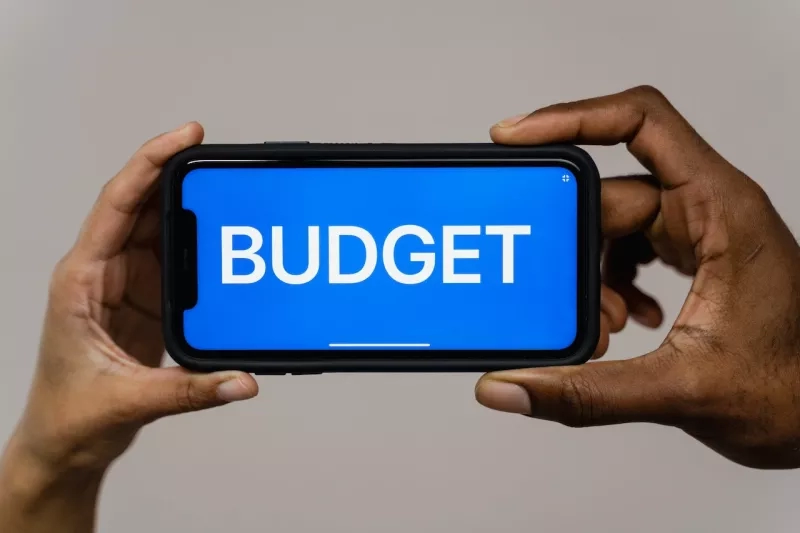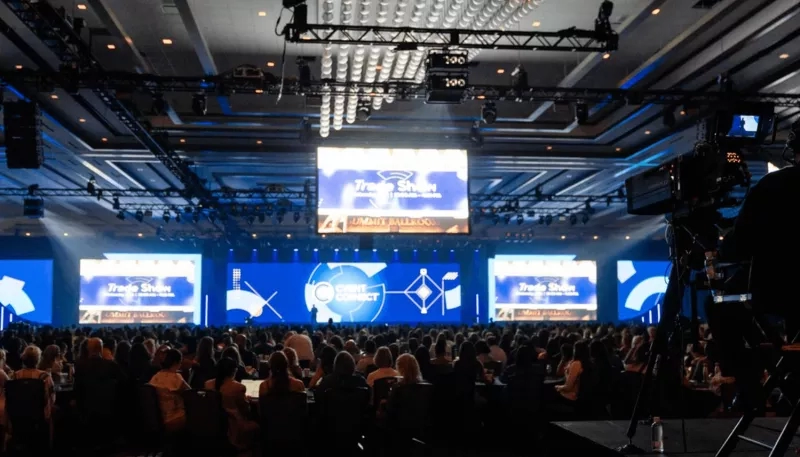There are many ways to budget, and finding the one that works best for your organization is important. Traditionally, the event budget lives in an Excel sheet manually updated and cobbled together from invoices from vendors. It is prone to error and often not as up-to-date as it should be. While Excel can get the job done, there is an easier way. Event management software exists that makes it easier to manage your event budget.
Whatever tool you use, you’ll need to have it in place from the start. Consistency is key.
What’s your budget?
It’s one of the first questions you’ll need to answer when planning your eventand is a topic of interest to every stakeholder throughout the planning process. Budgeting for an event is complex. It requires organization and clarity. You’ll need to know where you stand at all times, but proper event budgeting makes stakeholders happier, leads to greater return on investment (ROI), and sets the stage for overall success.
How to determine a budget for an event
Where to start? Events range from complex to simple, small to large. Each one is unique, and that extends to the budget. The budget cannot be created in a vacuum. Your budget is determined by your company or the company hosting the event. Whatever kind of planner you are, in-house, third party, etc., your overall budget is often handed down by a higher power. It’s not as easy as being given a number and taking that at face value.
As the meetings and events planner, you have the expertise. You understand market costs and the price of planning an event. Determining the budget is a collaborative process.
How do you determine the budget for an event?
Different factors go into the budget for an event. some of these factors are company size, event goal, event scope, size of the event, and location.
The important thing to remember is that you don’t begin planning an event without landing on a budget. It may not be broken down completely, but you need a number. The amount a company is willing to spend affects the venue, location, size, and more.
For events that put out an RFP (request for proposals), the budget will already be identified. From there, it’s a matter of working backward and determining the must-haves and the nice-to-haves. If your organization doesn’t have an idea of what they’d want to spend, don’t go rogue. Look at the overall company budget and determine what the company can afford.
From there, try to calculate the potential ROI of the event. You can adjust the budget by evaluating what the event stands to bring in versus the amount spent. It’s all math at this point. Don’t forget to take into account the money you’ll get from sponsors. Sponsorships helppay for the event and add value for attendees. There is a lot to consider when determining the budget for an event.
How much does an event planner cost?
The cost of an event planner is based on experience, relationships with vendors, bandwidth, and more. Some companies have event planners on staff. In that case, the cost of an event planner is salaried. Other times, for organizations that prefer to hire event planning companies or contract event planners, the cost of an event planner comes down to the scope of the project and experience.
Event planners bring tremendous value to a team. You're probably wrong if you think your event doesn’t require a planner. The invisible workload of meetings and events is real. It’s hard to understand the full breadth of the job when you don’t do it. If you need to hire an event planning company or an event planner, consider the following when hiring.
Years of experience
How long have they been working as an event planner? The number of years worked, and an event planner’s title are important. There is a lot you can learn from a title. For instance, meeting planners and event planners are similar, but often meeting planners are focused on internal and external meetings that tend to be corporate facing. Titles such as associate, manager, and director will provide you with information on their job type.
Type of events planned
Meetings and event planners are not all the same. Some focus on social events, some on conferences, some on product launches, and more. You should choose an event planner that has experience planning the same type of events you will need to be planned.
Industry
Events vary across industries. Industries such as life sciences, higher education, banking, healthcare, and more can give insight into the types of events the event planner is used to planning. It helps a planner to have industry insight when planning events.
Relationships with vendors
Vendors are everything. Established relationships with vendors can lead to discounts and ensure the quality of work. An experienced planner should come with several contacts pulled.
Availability
If you’re hiring an external company, what is their bandwidth? Make sure they have the proper team in place to execute your event.
References
Always check references. Experience is everything. Your events are expensive. Choosing a great planner can make or break your budget and play into the success of your event.
What do you need to consider before setting a budget for an event?
Your budget may be handed to you or you may have to determine it from scratch. Either way, it takes a whole lot of refining before it is ready. There are endless costs to consider and discuss with stakeholders. Even then, your budget will change. Your event budget is not static. It will change as event planning gets underway. A budget is a guideline that helps set planners up for success. Before setting a finalized budget, it’s important to consider the following.
Basic Event Costs
These are necessary costs that are the foundation of your budget. Depending on the event, you can’t have an event without a location or food; therefore, these are non-negotiable. Of course, with each item comes a range of prices. Food can range from simple to five-star, and transportation from a simple bus to limos.
Identifying the basics allows you to build out where you want to spend most of your budget. Is this an event for food connoisseurs? Then more money will need to be spent on food. The following are the basic costs that come with every event. What you decide to budget for each depends on the size of the event, the purpose of the event, and the upfront budget you have to work with.
Costs to Consider
- Event Planner
- Venue
- Food
- Labor
- AV
- Speakers and Entertainment
- Security
- Transportation
- Swag
Event marketing and promotion
Event marketing and promotion need to be part of your event budget. Getting the word out about your event is imperative. Otherwise, no one will attend. If you’re planning an internal event, you might not need to spend as much on marketing. For events with a large number of attendees and requiring attendees to pay for tickets, more money will need to be budgeted for event promotion.
Event Registration Website: The hub for your event and primary marketing tool. This is where attendees will be convinced to attend and register for the event.
Graphic Design: Event logo, ads, collateral, website, swag, and more.
Social Media: There are free and paid options for social media. The costs associated with social media promotion may fall under graphic design.
Paid Ads: Not necessary for all events; there are many options for paid ads, and you should choose ads that will impact your target demographic the most.
Email Marketing: A great and inexpensive tactic for promoting your event, email marketing directly delivers information about your event to potential attendees.
Event management technology and tools
Event management technology and tools should also be built into your budget. They are necessary for planning events and the cost needs to be included. Often, sponsorships can be used to pay for the cost of event technology. Sponsorship is key to defraying costs and building a budget that gives attendees an experience to remember. Don’t forget to budget for the following event management tools:
- Event management platform
- Event website
- Email marketing
- Mobile event app
- Onsite event check-in and solutions
- Data and analytics
Read more about 9 Tips for Avoiding Sticker Shock
The importance of budgeting for an event
Why is it important to budget for an event?
A budget is a guide. While it’s challenging to create and can be even more challenging to stick to, it helps planners and stakeholders alike.
Event management is all about management. It’s in the name. Planners can execute efficiently by creating clear processes in all planning aspects. Think about the planning process. A budget sets the framework for how much can be spent and forces planners to figure out what to put more money into throughout the planning process. It should be a no-brainer that expenses must be managed, and a formal budgeting process should be in place. Your organization only has so much they’re willing to spend on an event based on the expected return.
A budget keeps the planning team aligned and provides a metric to stakeholders. The best way to budget involves creating a process that can be replicated across teams to create a standard. This budget can then be used to prove event success after the event. While event ROI isn’t all about money, most of it is. The simple dollars and cents of whether revenue outweighed costs is an easy metric for stakeholders to understand.
What are the benefits of budgeting for an event?
Budgeting for an event allows planners to work within clear parameters. There is always a finite amount of money that can be spent on an event. Knowing that number, it only makes sense to track expenses of special events to ensure the final amount spent doesn’t exceed to original budgeted value.
Stakeholder alignment
There is always someone to report to. When it comes to events, there are many options depending on the type of meetings and events planner. A corporate meeting planner who primarily plans internal events will answer to their manager or an executive in the company.
A third-party planner answers to the client for whom they are planning their event. A budget serves as a data point that stakeholders can relate to. If the budget for the event was set at $50,000, budgeting allows the planning team to provide a metric on which they are on track or not. It is a way to align with executives and stakeholders in a language they understand.
Organizational success
There are many levels of event budgeting. From budgeting out the event program as a whole to budgeting for individual events, there are weights associated with different meetings and events. Budgeting can help with event prioritization. If a company throws a large conference every year, that budget should be bigger than what is available for an internal meeting.
Standardizing the types of meetings and assigning each a general dollar amount makes it easier to maintain consistency when planning across the organization.
Event goals
The purpose of the event impacts the budget. Is the event meant to raise money? Chances are, sponsorships can cover a great deal of the event budget for a charitable event. Is the purpose of raising brand awareness? Then the metric most important to determining event success won’t be focused on revenue but on attendee feedback.
While sticking to a budget is still important, the costs associated with event goals will range.
Event ROI calculation
The budget is a key component of event ROI. Whether it comes down to how over or under you were on the established budget or the revenue from the event, the budget is part of event ROI. Keeping clear, itemized budget makes event ROI calculation easier in the end.
What is the most important aspect of budgeting for an event?
The most important aspect of budgeting for an event depends on the organization and the event.
First, budgeting is a continuous process. The budget must be updated throughout the planning process to reflect vendor contracts, changed rates, etc. Second, the amount spent per item depends on what is important to the client. A food-focused event is going to have a higher amount set aside in the budget template for F&B than one that places more weight on entertainment. Attendees influence the budget.
By reading feedback from previous events and clearly articulating event goals, the budget may shift from event to event or year to year. When it comes down to it, events are about attendee satisfaction. If they aren’t pleased and are unlikely to return to the event the following year, it doesn’t matter that you were under budget.
Check out our Event Planning Guide.
How to stay on track with an event budget
Sticking to your budget is about taking the time to create a clear process and sticking to it. First, you need an event budget. This budget needs to be broken into categories like labor costs, venue, catering, planning, vendors, etc. With the values assigned to each necessary event aspect, you have a guideline moving forward.
But if you never check the budget once it’s been set, there’s no chance you’ll stick to it. Budgeting doesn’t stop at creating the budget. It involves tracking expenses and redistributing money based on unexpected costs that emerge throughout the planning process. Following a few simple rules will make it easier to maintain your budget.
Check the budget often
The budget should be top of mind at all times. Create a daily or weekly meeting to review the budget and track expenses. Having time set aside explicitly to check the budget means you’re more likely to check it. Set up meetings with key stakeholders periodically to keep them in the know.
There are a variety of meetings that should be set up throughout the planning process. Here are a few examples of the types of budget meetings that should be on your calendar throughout the event planning process.
- Initial budget discussion with key stakeholders
- Budget buildout meeting
- Budget approval meeting
- Weekly budget meetings with event managers and the planning team
- Periodic budget meetings with key stakeholders
- Budget resolution meeting at the end of the event
- Final budget review meeting following the event with key stakeholders
Put all expenses in a central location
You don’t have to create a budget from scratch. Some templates and tools exist to make budgeting easier. From tools that allow you to track expenses using a mobile app to spreadsheets, there are options depending on your budget for tools. A budget is most effective when it is located in a central location, is easy to update, and allows multiple viewers and editors.
Excel spreadsheets are often used for budgeting, but there’s more than that out there. Different platforms exist to help build and track budgets that will send updates and more.
Be flexible and willing to rework the budget
Your budget is a guesstimate. Sticking to a budget is about flexibility. You can reallocate dollars based on actual costs by tracking them throughout the planning process. For example, you might have budgeted $5,000 for a venue, but it cost $6,000.
The extra expense will need to come from a different line item. On the flip side, some items won’t cost as much as budgeted. Keep on top of the budget and redistribute money as you can to meet the budget overall. Be sure to track where you came in under budget.
Virtual event budget
When planning a virtual event, your budget changes dramatically. You do not have to pay for venue space, catering expenses, or travel fees. Instead, you should reallocate your budget to make your virtual event as professional an experience as possible. Invest in good production services, lighting, and audio so your attendees can deliver the same world-class experience they would've had at an in-person event. Additionally, make sure you have a virtual event tool that will help you put on an engaging event.
How can you get back on track if you go over your event budget?
There are a few ways to get back on track when you go over budget. All hope is not lost. But it’s important to be on top of your budget. Start by identifying what caused you to go over budget. If it was an unavoidable cost, then you’ll need to adjust other items in the budget. Sponsorship shouldn’t be taken for granted in the planning process and should be included in the event budget. Most events, especially corporate events, can benefit from sponsorships.
The idea is to find companies that want to reach the same audience as you and offer them increased visibility at the event. Establish sponsorship packages and levels early on in the planning process. As sponsorships come in, you can adjust the budget. Sponsors can end up covering the cost of a happy hour event during a conference, your mobile event app, signage, and more. If your budget gets off track, think about selling more sponsorships. This can add an influx of cash to your budget.
Of course, you should be providing sponsors with real value. Otherwise, they won’t want to sponsor your event in the future. Leads, analytics after the event, and an increased flow of attendees can entice sponsorships to buy sponsorship packages.
Here are a few steps to follow if you notice your budget is off track:
- Determine what caused the budget to go off track – which item did it?
- Can you work a deal with that vendor to bring the price down, or can you get a discount on any other items in the budget?
- Are there still dollars available that could be redistributed? Make sure to adjust the budget accordingly and update stakeholders.
- Can more sponsorship packages be sold? Add additional benefits and increase the cost. This can be a good upsell opportunity for existing sponsors.
Read the ABCs of Event Planning.
Try Cvent Event Budget Management for your next event!









